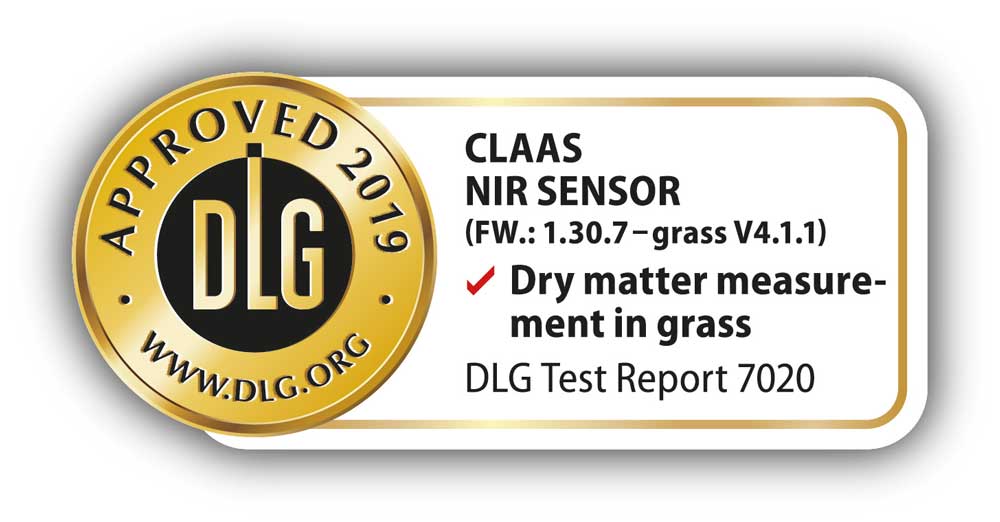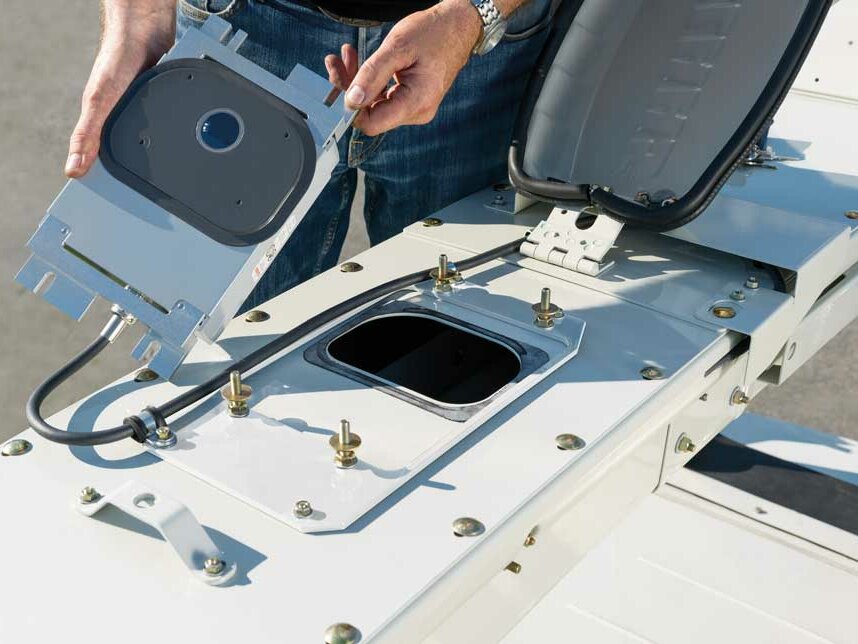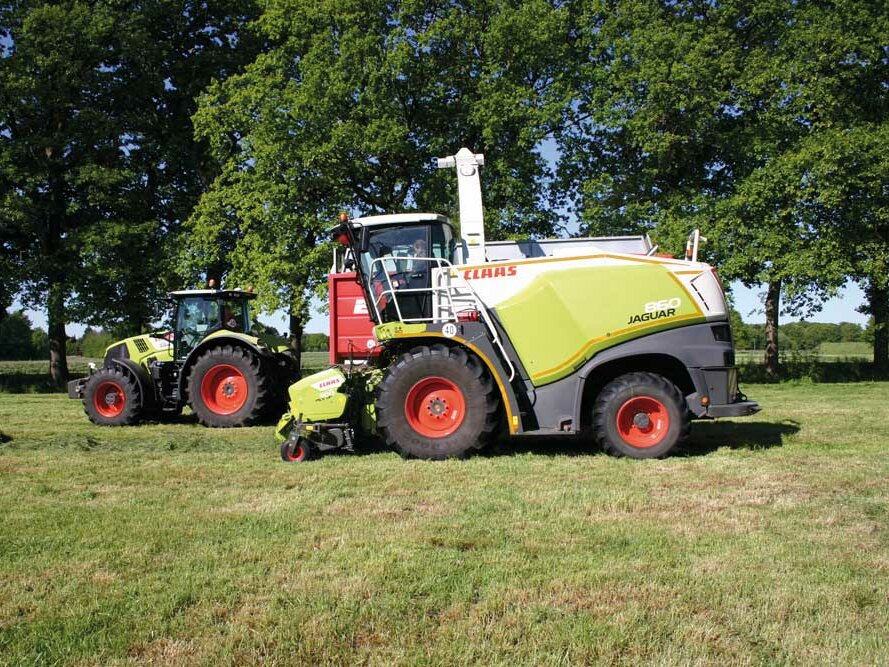CLAAS NIR sensor for forage harvesters: Good for grass too
By Georg Horst Schuchmann, DLG Test Center Technology and Farm Inputs
Independently of what is to be ensiled, quality of the resultant silage depends to a great extent on the moisture content of the chopped material. In particular for grass, clamping too dry means sufficient consolidation is difficult to achieve. Faulty fermentation can occur. Too high moisture content in the clamp, on the other hand, can produce effluent with clamp seepage carrying away nutrients, the corrosive liquid potentially damaging clamp substance or, worst of all, large amounts of it leaking into the environment.
Danger identified: avoidance easier
If the dry matter content of the forage being carted home is known, then measures can be taken during clamp filling by mixing different moisture content forage when building the clamp, or applying an appropriate silage additive. Standard officially-accepted laboratory tests for determining moisture content involve calculating sample weight loss after at least 24 hours drying at 105°C in a drying cabinet until weight constancy. But this entails a long wait for results leaving no time to react during the harvest day. Work may be completed, or the clamp even sealed, before results become available.
Near-infrared spectroscopy (NIR) is a measurement method that has already won for itself a permanent place in agriculture following use in laboratories and online monitoring of loose materials and liquids in industry. Spectrometry entails material or its chemical compounds partially absorbing and partially reflecting applied energy such as heat, light or another electromagnetic wave radiation. Absorbed energy is usually re-emitted. Hereby, absorption and emission occur within a light frequency specific to the material involved. There occurs a measurable colour shift between the radiated and reflected or re-emitted light. The initials NIR stand for near-infrared. NIR measurement equipment measures light spectra in the near-infrared range. Monitoring scope depends on appropriate filter and algorithms applied.
Claas NIR sensor
The Claas sensor submitted for testing came fitted with the calibration model “Gras V4.1.1“ and the firmware 1.30.7. As well as dry matter content, the manufacturers say that the NIR sensor can also measure crude fat, crude fibre, crude ash, protein and sugar contents within certain limits. The sensor is fitted in the forage harvester spout bend and delivered 200 data readings per second. The forage harvester CEBIS onboard information system calculated an average reading at one second intervals. Additionally, the average dry matter content on the field could be called up via the job management system.
Comparing precision
In the test reported here, the aim was to compare the precision of the mobile sensor in determining grass dry matter with the official reference method (using drying cabinet). To facilitate this, harvest conditions on the spot were determined with a preliminary test. To cover an as wide as possible working spectrum, the tests were carried out with in each case two different grass varieties, each at two dry matter levels. For each of these four test variants, ten wagon loads were harvested, and respective average dry matter contents documented via the NIR sensor for each load. Additionally, a sufficient number of samples were taken from each load following tipping at the clamp for the preparation of a representative mixed sample. Following homogenisation, these samples were each divided into five portions. For all portions the dry matter was determined in the laboratory by drying cabinets and average dry matter content calculated for every wagon load. The average values from the laboratory analyses were then compared with the corresponding results from the mobile NIR sensors and the absolute variance for the pairs of variates between sensor and reference calculated.
Results and conclusion
For all 40 reference measurements (wagon loads) the determined deviation between sensor and laboratory results lay under 3 %abs and for 35 of these 40 pairs of variates even under 2 %abs. No sensor reading exceeded the permitted tolerance of more than 4 %abs. Over all the recorded silage wagon loads, the Claas NIR sensor results compared with the results from the reference analyses returned a high coefficient of determination of R² = 0.987.
In conclusion it can be stated that the Claas NIR sensor, following a successful test with maize in 2013, also now fulfils the DLG test requirements for grass. In other words, under practical operational conditions it is sufficiently precise and delivers results for the dry matter content of the harvested material comparable to these of the official reference method. The complete DLG Test Report 7020 can be accessed free online at www.dlg.org/en/agriculture/tests/test-reports/field-operations/test-claas-nir-sensor/.

Test scope:
- Online moisture content measurement in grass
- Comparison with official reference method




